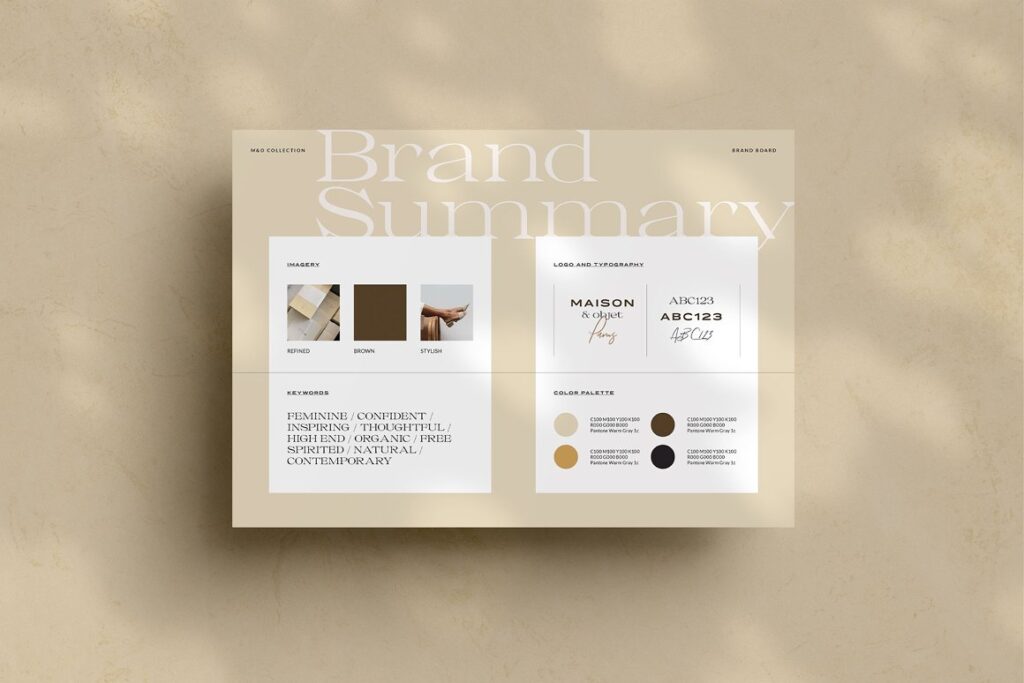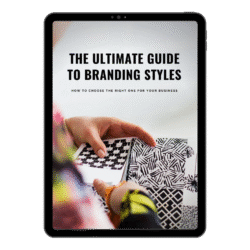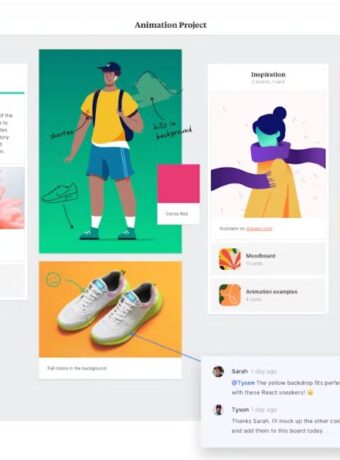What is Brand Anatomy – Its 8 Major Elements
Does your brand feel almost right, but not quite?

Like something essential is missing, even though you’ve put in the work? You’re not alone. Many creative founders, designers, and brand strategists hit this wall. The truth is, a great brand isn’t built on visuals alone. It’s built on structure.
This guide breaks down the full brand anatomy: the proven framework top creatives use to transform scattered ideas into a cohesive, high-converting identity. We’ll walk through all 23 essential elements that shape how your brand looks, feels, and communicates, from positioning and values to visual elements and emotional tone.
Whether you’re building from scratch or refining what’s already there, this is the clarity you’ve been looking for.
Header image creator: Agata Create brand board

Brand board by Made for Creatives
What Is Brand Anatomy?
The anatomy of a brand consists of three key components: positioning, values, and personality.
These elements work together to define the brand’s identity and help it stand out in a crowded marketplace.
Learn EVERYTHING about seasonal design and much more you will love, HERE: Creative Access.
1. Brand Positioning
The positioning of a brand refers to how it is perceived in the world and in the minds of its target audience relative to its competitors.
It involves identifying the unique value proposition of the brand and communicating it in a way that resonates with the target audience. This may involve identifying the brand’s vision, key benefits, target audience, and competitive advantages, and using these insights to craft a compelling brand message.
Brand Positioning Statement
A brand positioning statement is a brief statement that describes how a brand differentiates itself from its competitors and communicates its unique value proposition to its target audience. It typically includes the following elements:
- Target audience: Who the brand is trying to reach and appeal to.
- Category: The category or market in which the brand competes.
- Unique selling proposition (USP): The unique benefit or value that the brand offers to its target audience.
- Reason to believe (RTB): The evidence or proof that supports the brand’s USP and distinguishes it from its competitors.
Here’s an example of a brand positioning statement:
For busy, health-conscious professionals who want to stay hydrated and energized throughout the day, Gatorade is the sports drink that delivers superior hydration, replenishing electrolytes and carbohydrates to help you perform at your best. With over 50 years of scientific research and endorsements from top athletes, Gatorade is the proven choice for athletes and active individuals seeking peak performance.
2. Brand Values For Customer Loyalty
The values of a brand refer to the underlying principles and beliefs that guide its actions and decision-making.
These values may include a commitment to quality, innovation, sustainability, or social responsibility, among others. By identifying and communicating its values, a brand can build trust and loyalty among its customers and establish a distinct identity that sets it apart from competitors. These values are the foundation of a brand’s identity and culture and help to shape its relationship with its customers, employees, and other stakeholders.
Some common examples of brand values include:
- Integrity: A commitment to honesty, transparency, and ethical behavior in all aspects of the brand’s operations.
- Quality: A focus on delivering products or services that are of the highest quality, and that consistently meet or exceed customer expectations.
- Innovation: A commitment to continuous improvement and a willingness to embrace new ideas, technologies, and approaches.
- Sustainability: A dedication to minimizing the brand’s impact on the environment and to promoting social responsibility and ethical practices throughout the supply chain.
- Customer focus: A commitment to putting the needs and desires of customers at the center of everything the brand does, and to creating a positive and memorable customer experience.
- Diversity and inclusion: A commitment to creating a culture of diversity and inclusivity, and to promoting equality and respect for all individuals.
Other branding values may include teamwork, collaboration, creativity, passion, and accountability, among others. The specific brand values that a brand chooses to prioritize will depend on its unique identity, mission, and goals, as well as the expectations and values of its target customers.
3. Brand Personality And Why It Matters for Creatives
Brand personality refers to the set of human characteristics, traits, and emotions that are associated with a person as a brand.
Just like individuals, brands can have a distinct personality that helps to shape how they are perceived by their audience and how they interact with their customers. This may involve identifying the brand’s tone of voice, visual style, and overall aesthetic, as well as the emotions it aims to evoke in its customers.
By developing a back story and strong brand voice, a brand can establish a deeper emotional connection with its customers and create a sense of loyalty that goes beyond mere functionality or price.
Real-Life Visual Branding Examples
1. Excitement
Brands with an “excitement” personality are lively, adventurous, and always looking for new life experiences.
Group 1- Brand Design 1: How To Brand a Youthful, Open, and Happy Business– Coca-Cola, Red Bull, and LEGO
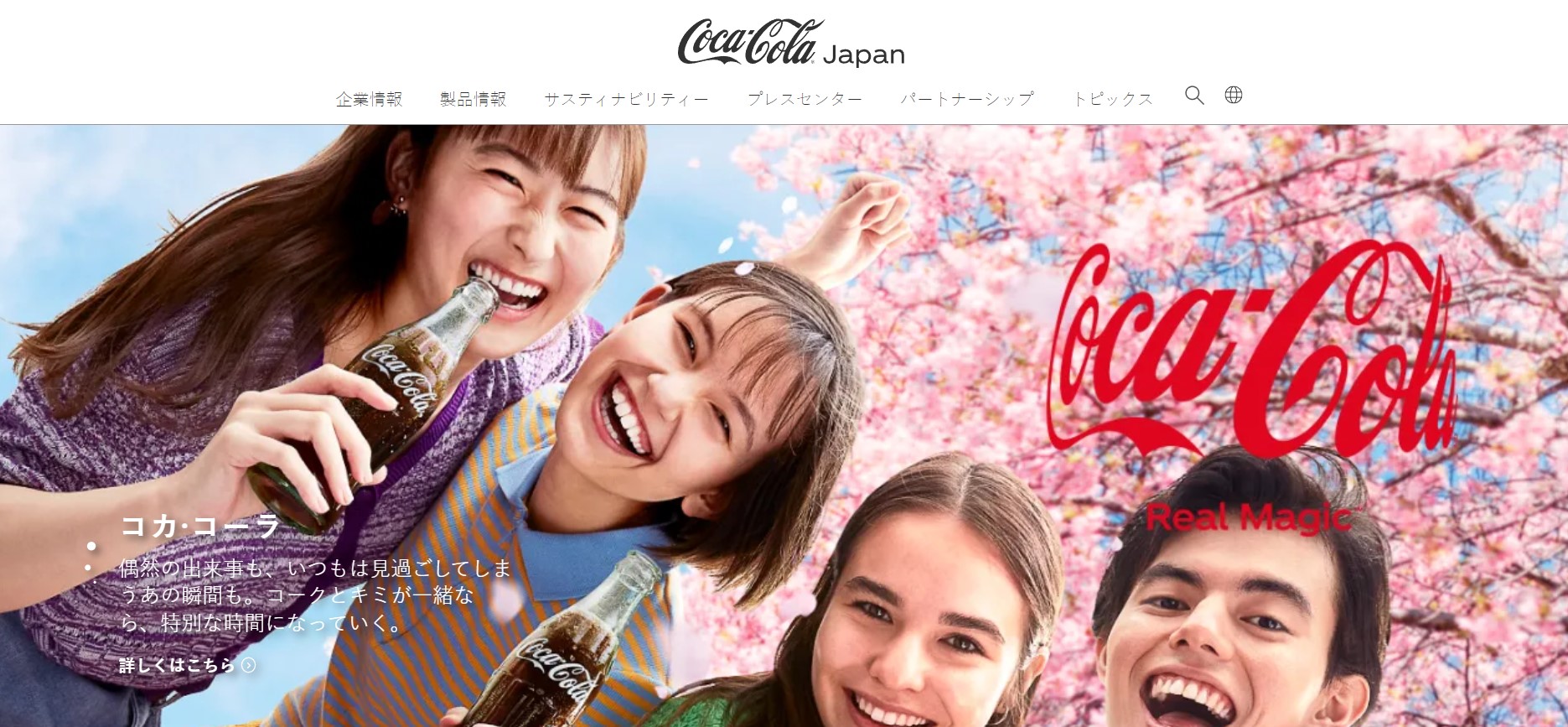
Coca-Cola Japan
2. Elegance
Brands with “Elegance” are efficient, trustworthy, and understated businesses.
Group 2- Brand Design 2: How To Brand an Elegant, Feminine Business– Whamisa, Aesop, and Sabe Masson
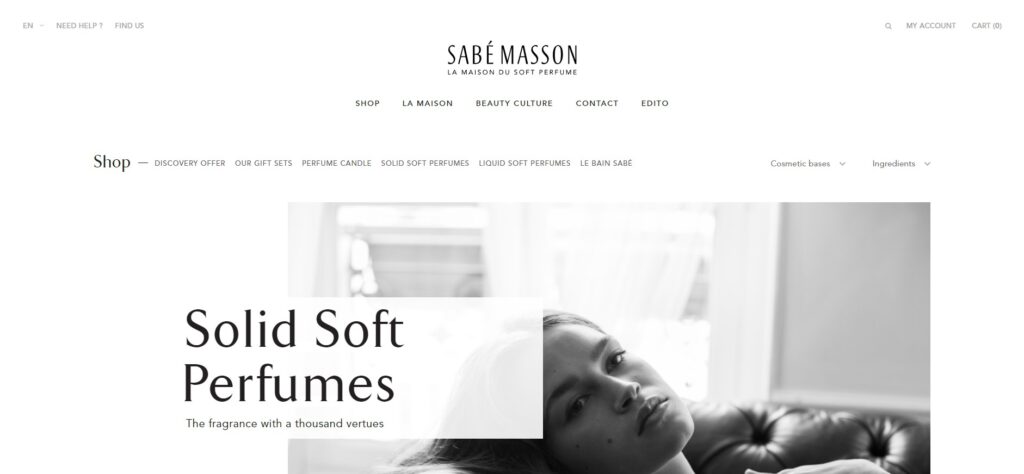
3. Ruggedness
Brands with a rugged personality are tough, outdoorsy, and rugged.
Group 3- Brand Design 3: How To Style an Earthy, Community-Focused Business– The Body Shop, Jeep, Timberland, and Patagonia.
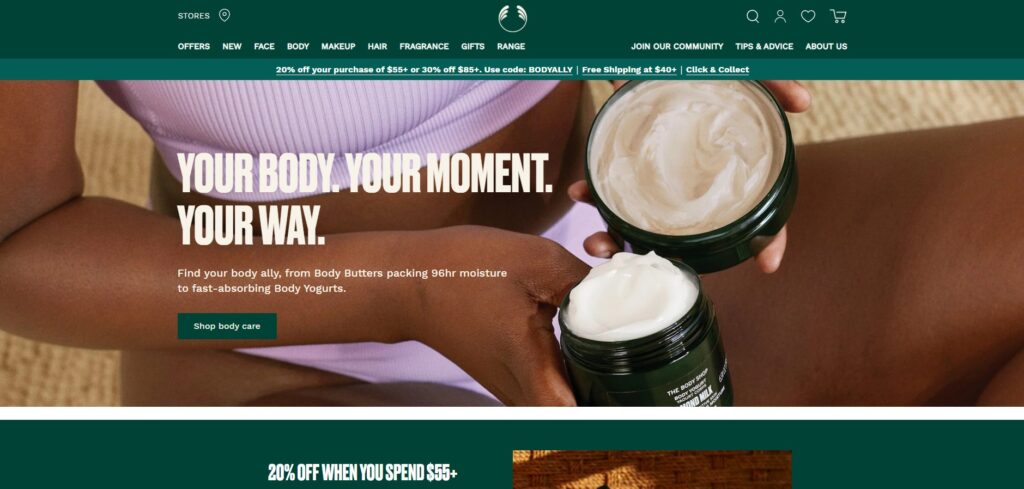
4. Sophistication
Brands with sophisticated personalities are elegant, refined, and luxurious.
Group 4- Brand Design 4: How To Brand a High-End, Luxury Business- Chanel, Rolex, and Mercedes-Benz.

Why Is Brand Identity So Important?
Understanding the anatomy of a brand is essential because it helps you to create a strong and cohesive brand identity that resonates with your target audience.
By defining the key elements of your brand, you can ensure that your brand is consistent and memorable across all of your marketing channels. Having a clear brand identity and personality helps you to differentiate your brand from the competition, making it easier for customers to recognize and connect with your brand.
This can help companies to build brand loyalty and increase customer engagement, leading to increased sales and business growth.
In addition, having a clear brand positioning and messaging helps you to effectively communicate your brand’s unique value proposition and benefits to your target audience.
This can help to attract new customers and build trust and credibility with your existing customer base.
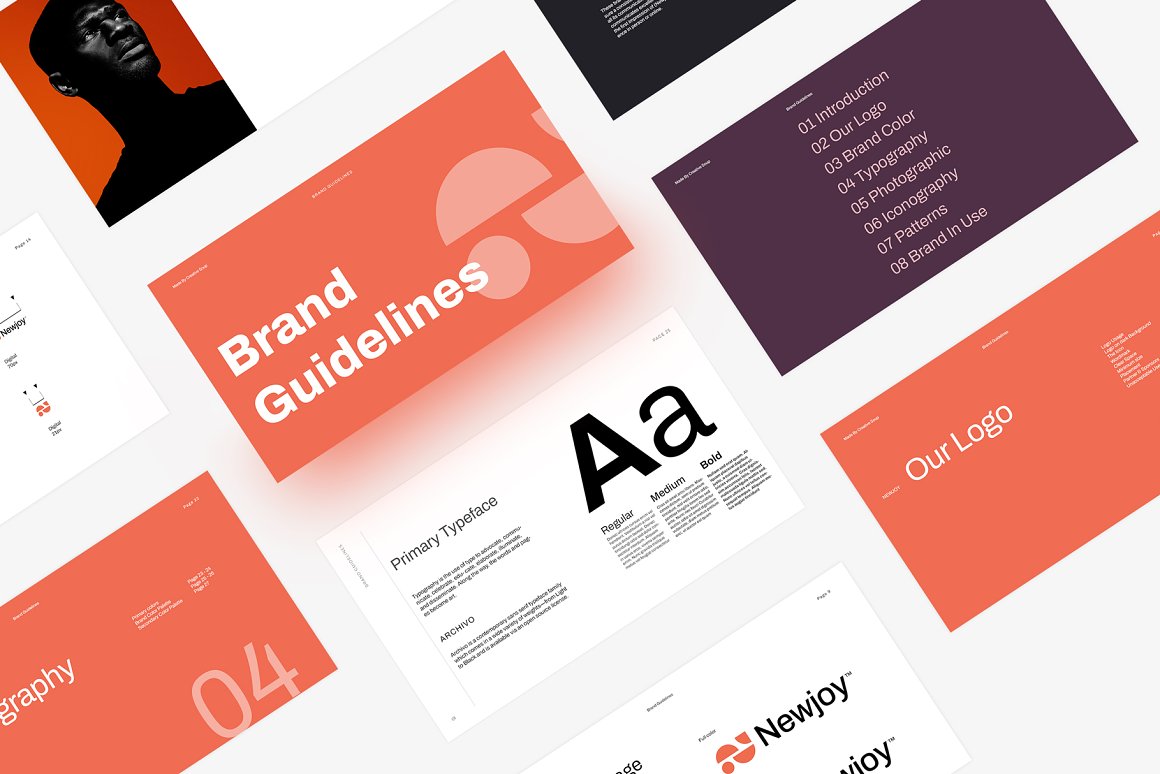
Brand Guidelines template by CreativeSoup.io on Creative Market
The Elements Of Visual Brand Anatomy
A brand’s graphic elements are the visual cues that help customers identify a company by its brand vision and its products or services.
They can include logos, colors, packaging, and even typefaces. When used effectively, brand graphic elements can help to create a strong visual identity that differentiates a company from its competitors. Brand graphic elements can also help to build customer loyalty and recall, making it easier for customers to remember a company when they need its products or services.
Companies can create a powerful visual branding strategy by investing resources in high-quality elements to drive sales and support long-term business growth.
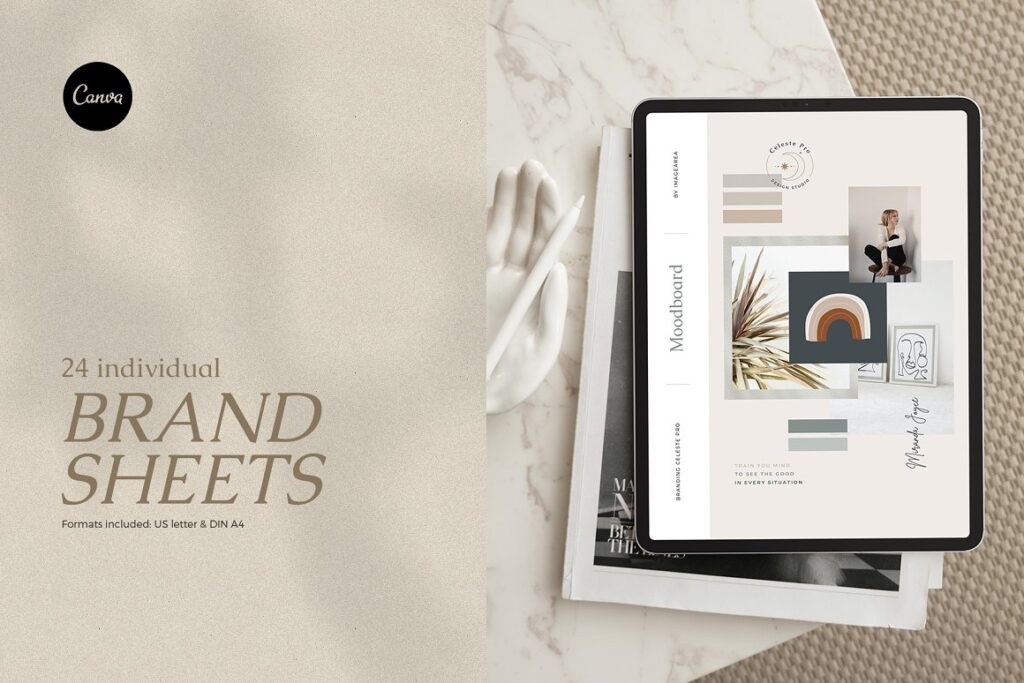
1. The Brand Name
The brand name is one of the essential elements of branding. The name should be easily recognizable and memorable, and it should be relevant to the products or services that the business offers.
2. The Logo
The logo is another vital element of a brand’s identity. The brand logo should be simple and easy to understand, and it should be able to be used across a variety of mediums.
3. The Tagline
The tagline is another element of a brand board. The tagline should be concise and memorable, and it should capture the essence of what the brand is all about.
4. The Colors
The colors should be eye-catching, relevant to the brand and mission, and used consistently across all marketing materials.
5. The Fonts
The fonts should be easy to read, appropriate for the brand, and used consistently across all marketing materials.
6. The Icons and Devices
Icons are an essential part of the visual representation of any brand. Icons can take many forms, from simple geometric shapes to more complex illustrations.
7. The Photographs
Brand photography is about creating visuals that capture the essence of your brand and communicate it to your target audience. It’s not just about taking pretty pictures – although that’s a part of it. Photography is about telling the world a story, your brand story, through images that connect with your audience on an emotional level.
8. The Illustrations
Illustrations can be essential components in establishing and reinforcing a brand’s identity. By creating a visual language unique to a particular company, illustrations can help to make a brand instantly recognizable.
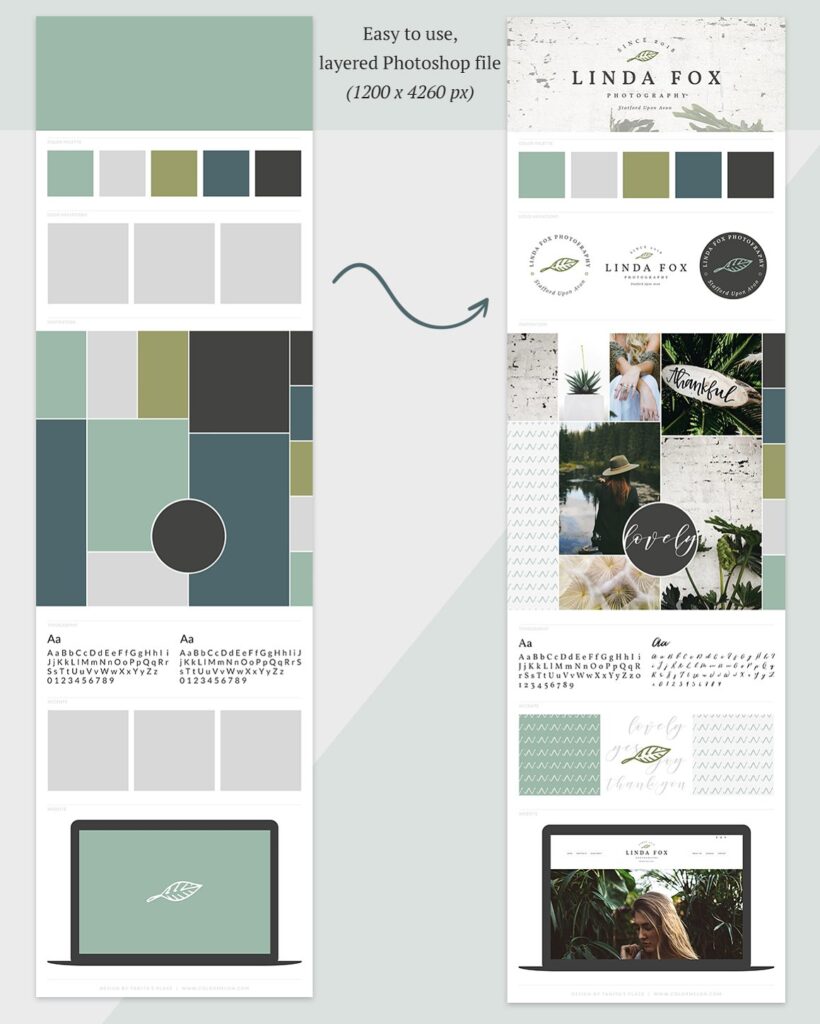
Brand anatomy – branding board template by amber&ink on Creative Market
Conclusion
When your brand finally clicks – when the tone, the visuals, the message, and the feeling all work together, then everything starts to feel easier.
People understand what you’re about. They trust you faster. And you feel proud to put your work out there. That’s what brand anatomy is really about. It gives you a clear structure so your brand connects, builds loyalty, and moves your business forward.
If your brand has felt a little scattered, this framework helps you bring it all into focus. And if you’re ready to take that step, we’re here to help you do it, clearly, beautifully, and with intention.
Cover photo: UELA Branding on Behance. Check out the whole brand identity!
Read more about brand and design here:
Learn all about all four color psychology personalities:
- Group 1- Brand Design 1: How To Brand a Youthful, Open, and Happy Business
- Group 2- Brand Design 2: How To Brand an Elegant, Feminine Business
- Group 3- Brand Design 3: How To Style an Earthy, Community-Focused Business
- Group 4- Brand Design 4: How To Brand a High-End, Luxury Business
Last Updated on 28/05/2025 by Victoria Silber



